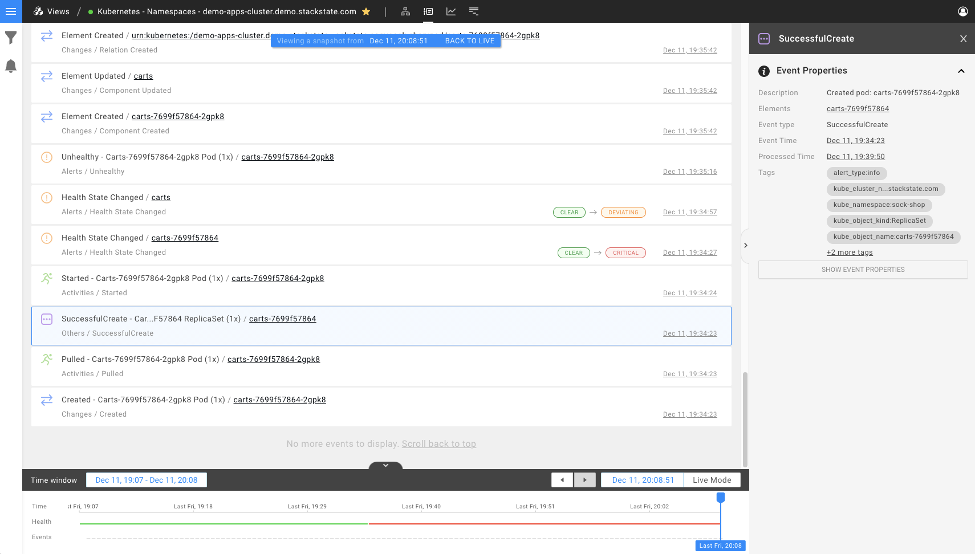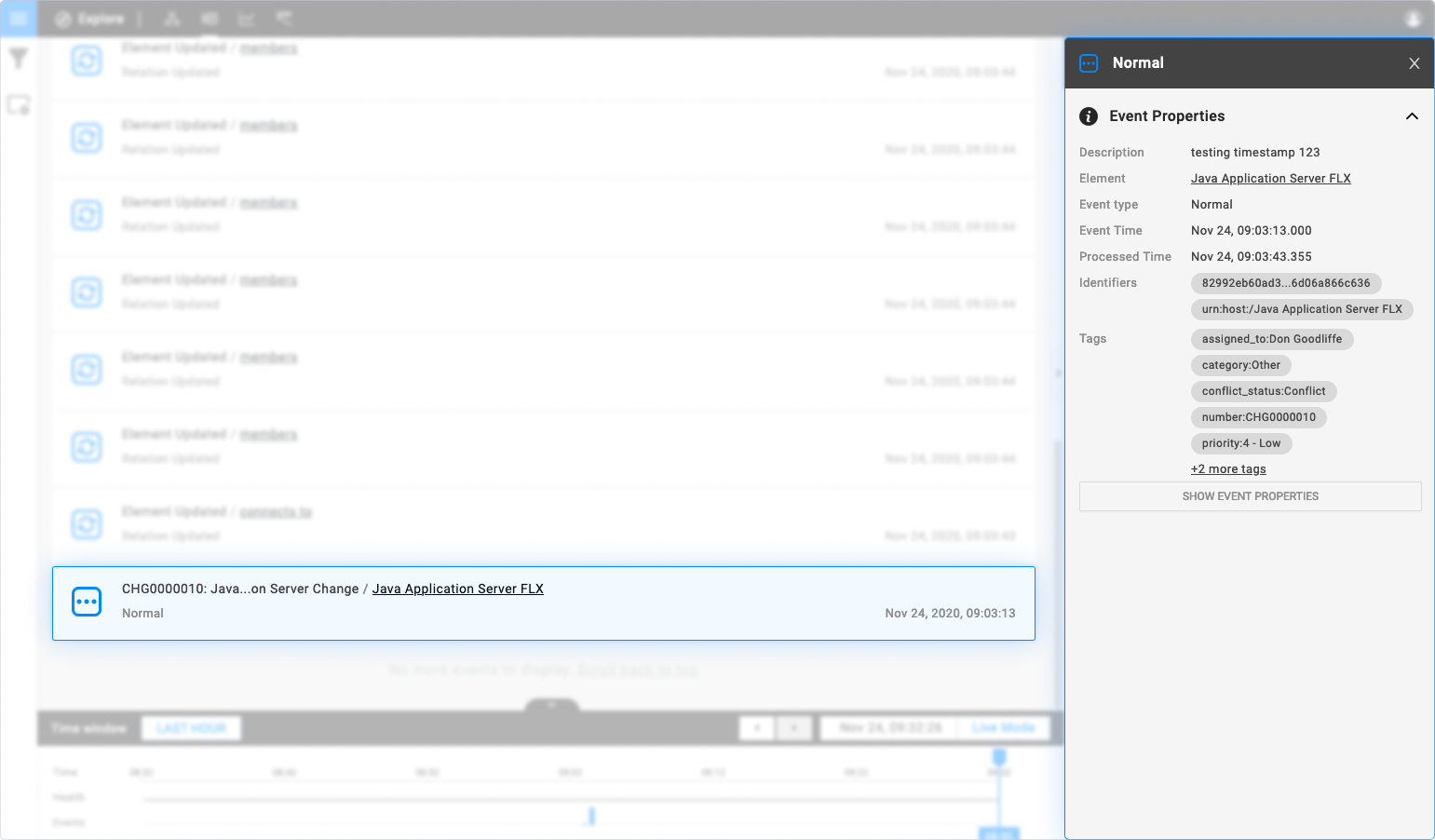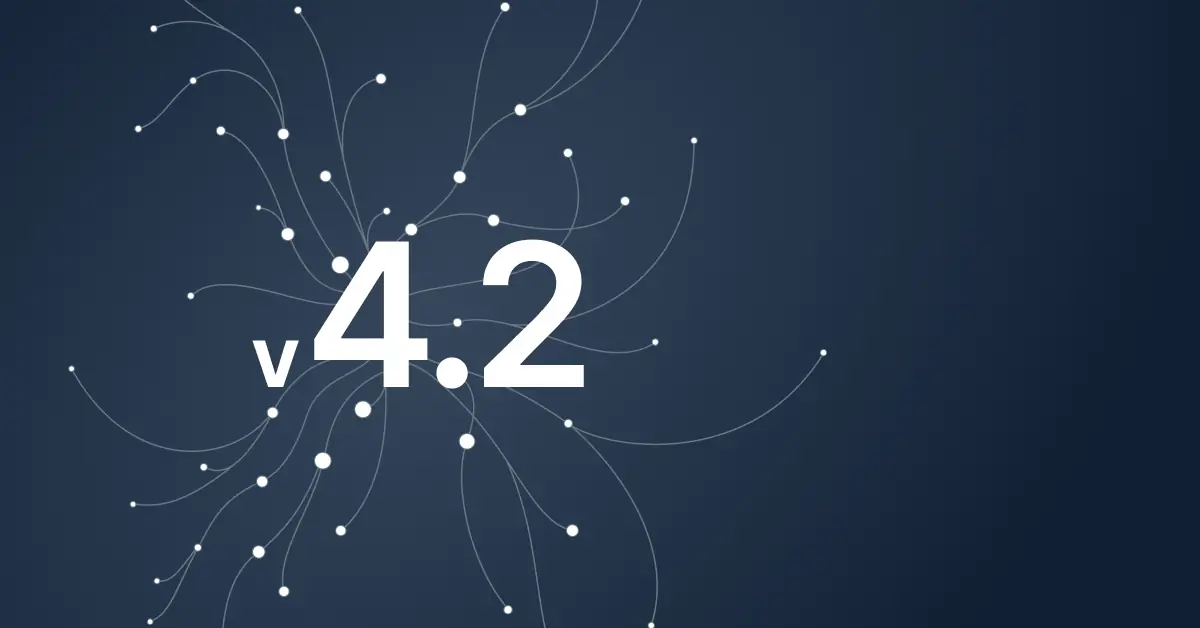This release includes improvements to the following areas:
Relating changes to incidents - StackState's 4T Data Model is the most complete way to model an IT landscape. With the 4.2 release, this capability is extended with the ability to record external changes and events to help you quickly find the change that caused the issue or outage.
Automated Root Cause Analysis (RCA) - StackState automates the process of finding the root cause of IT problems. In this release, we improved the ability to notify users of a problem by providing root cause information directly in the alert.
Integrations - We continue to add more data sources to StackState to complete the model of your IT landscape. StackState now integrates with Dynatrace and ServiceNow. In addition to topology, StackState records changes and events from these systems so you can use them in root cause analysis.
External Changes and Events
Today's dynamic IT landscapes are continuously changing and evolving. Practices like Continuous Integration and Continuous Delivery push out software changes at the rate of tens or hundreds per day. Modern DevOps practices ensure the same for infrastructure changes. Since changes are often the cause of problems, StackState records these changes along with the topology.
StackState previously recorded events internal to StackState, such as health state changes or component updates. In the new release, StackState makes it possible for integrations to push changes and events to be recorded in StackState. The Event Perspective now shows events from systems like Kubernetes and changes from ServiceNow directly in StackState to help you identify root causes of down-time and performance issues even faster.

Context-rich alerts
Responding to an IT incident usually starts with an alert that indicates a problem. Alerts from regular IT monitoring systems usually indicate the metric that has crossed some preconfigured threshold, but little more. Through its 4T Data Model, StackState knows far more about the issue, namely what the root cause of the issue is and what services the issue is impacting. This is invaluable information for a first responder to have.
StackState previously sent alerts to Slack for any problem detected. Now, the impacted components and possible root cause are provided directly in the alert.

Integrations
The more complete the map of your IT landscape, the easier it becomes to identify and fix issues. That is why we continue to expand the IT systems that StackState integrates with.
In StackState 4.2, we support integration with Dynatrace and ServiceNow. The Dynatrace integration ingests topology information from Dynatrace and integrates it with the rest of your landscape. The ServiceNow integrations loads information from the CMDB, as well as change requests into StackState.
Deprecation schedule for Linux packages
For this release, StackState can still be deployed using Linux packages. However, please be aware of the deprecation schedule for Linux packages:
For the next major release, tentatively named 4.3.0 and scheduled for March 2021, Linux packages will be deprecated.
For the following major release, tentatively named 4.4.0 and scheduled for June 2021, Linux packages will be deprecated.
For the following major release, tentatively named 5.0.0 and scheduled for September 2021, Linux packages will no longer be made available.
Product releases are supported for the duration of the next two major releases. That means Linux packages for 4.4.0 will be supported until at least December 2021.
Many other improvements
The agent now runs on Windows 2012 and performs automated discovery of processes and connections on Windows 2012 machines. Connections are discovered in a heterogeneous IT landscape with combinations of Windows, Linux, Docker, and Kubernetes-based systems.
Many UX improvements - We've listened to your input and used it to improve many parts of the user interface experience.
Many performance enhancements - The overall responsiveness of the product experience and the amount of 4T data StackState can handle has improved. Performance improvements were mostly focused on topology synchronization and on the speed of state changes in checks and views.
The 4.2 features are available immediately to all customers.



